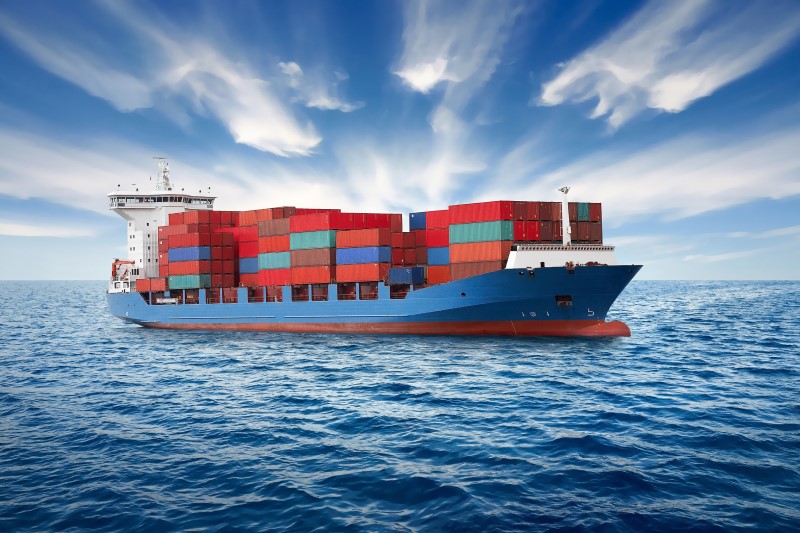Have you experienced the import of bulky goods such as furniture, doll machines, electrical appliances, large musical instruments, and so on. Then, you will face the following problems:
- Are the goods damaged?
- Transporter can’t unload your goods?
- Are import transportation fees expensive?
So how do you take precautions to ensure that the goods are safely transported to the destination for unloading?
To make a large goods process can be smoother. Here I have sorted out the three important things that must pay attention to matters about import large goods.
First: Packaging Protection
One of the main risks of importing large goods is their heavyweight and large volume, and it is easy to bump and damage. Therefore, must pay more attention to the packaging. Here are a few tips on the packaging.
-
Custom Shipping Crates and Add Forklift
First of all, if your large items are fragile, you can ask China’s suppliers to nail the goods in a wooden box in advance to ensure that the goods will not be damaged during transportation. Wooden boxes are divided into sealed or open types, depending on the situation, the price and cost are also different. Also, don’t forget to add forklifts to the bottom of the container to facilitate forklift handling.
![]()
-
Pallet
Moreover, if your container volume is too large, you must let the supplier put the container on the pallet to facilitate the forklift unloading.

-
Do not exceed the area of the pallet
In addition, if your goods are loaded on a pallet, don’t put the goods that exceed the pallet area. This will cause incalculable damage to your goods.

-
Tie the tray and wrap it with plastic wrap
Further, be sure to use enough ties or plastic wrap to hold the goods on the pallet. Black plastic wrap is recommended for valuable goods.

-
Cylindrical goods
Then, if your goods are a cylindrical shape, overweight, large goods should be fixed on the pallet in this way as shown below.

-
Flat palletized goods
Lastly, sometimes the volume and shape of your goods may be inconsistent. Do not put your goods irregularly on the pallet, it will cause damage to your goods. So, please be sure that put your goods in a flat.

.
.
Second:Unloading preparation
One thing to consider when importing bulky goods is how to move bulky goods to your warehouse? Compared with small goods, more attention should be paid when unloading large goods. Unloading of large goods requires the use of professional large-scale loading and unloading tools such as cranes, forklifts, etc. Ensure that large goods are not damaged.
-
Ensure that unloading ground must be flat
First, make sure the unloading area is flat and never unload goods on a slope! Especially cannot deviate from left to right! Make sure the trucker parks the truck on the flat place before starting unloading. If the goods are unloaded in uneven places, the forklift will separate its center of gravity during handling, which makes it easy to roll over.
![]()
-
Put the goods on pallets and bring your forklift
If your goods are too heavy or bulky, the transporters will not be able to help you carry them into your warehouse. Therefore, it is better to let the suppliers put the goods on the pallet in advance for convenient forklift handling. Otherwise, some logistics companies will refuse to accept the goods, and then it will be in trouble to get pallets bound again.
Generally, if the pallet is required, the supplier will charge additional fees. The following is the charging standard of the market:
Pallets – RMB 50 – RMB 100 (depending on the degree of newness of the pallet, old pallets may sometimes break)
![]()
-
Bring your forklift and manpower
![]()
For large cargo, the driver can’t unload the cargo manually, so need to bring his forklift or more manpower to unload the cargo. If you have any special needs, communicate with the transportation company in advance to avoid unnecessary trouble.
.
Third: Is it more cost-effective to enter the entire cabinet (FCL)?
![]()
We all know that there are three common container specifications:
- 20GP container – holds 29 cubic meters
- 40GP container – holds 58 cubic meters
- 40HQ container — holds 68 cubic meters
In conclusion, many importers want to import FCL goods because they think it will be more worthwhile and cost-effective. Not really! Because the import of the whole container average price of a cubic is often higher than the import of bulk cargo!
For example: if the imported 20GP container is RM15000, then the average one cubic meter is RM750/ CBM. However, if the imported bulk cargo is only about RM390 / CBM on average, it is more cost-effective!
For more logistics information, please subscribe to our C.I.E.F Official website and follow us.
Before that, if you haven’t registered an account. Please click – Register Account. You can directly use our services in the future.💁



